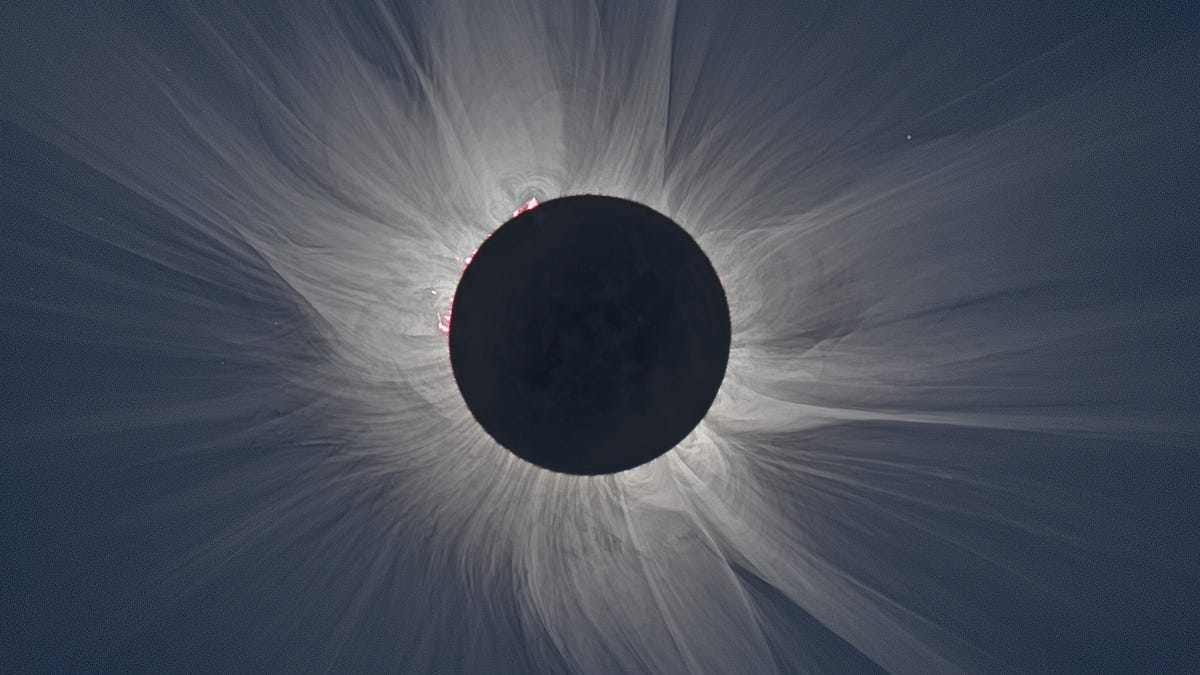 Why You Can Trust CNET
Why You Can Trust CNET Solar eclipse 2017: The best glasses and viewers
From the inexpensive to the wallet-breaking, there are lots of ways to watch this year’s eclipse.

If you hadn't heard, there's a major eclipse happening soon. The US hasn't had a total solar eclipse visible from coast to coast (Pacific to Atlantic) since 1918 -- so we figured we'd give you some retina-safe options for viewing the eclipse on Aug. 21, 2017.
And to be clear, safety is paramount. Repeat after me:
- Don't look at any phase of the eclipse with your naked eye.
- Note that conventional sunglasses will not protect your eyes.
- The cheap, unsafe eclipse viewers being sold won't protect your eyes, either.
We pulled those points from NASA's safety tips to prevent eye injury during an eclipse, and you should read all those tips.
When it comes to buying eclipse glasses, caveat emptor applies -- your vision is on the line, it's really important to know you're getting viewers with proper protection.
To that end, we've used those NASA guidelines to create our recommendations for eclipse-viewing gear. The most important rule of thumb while you shop is there are specific trusted manufacturers and vendors who sell certified glasses/viewers that meet the ISO 12312-2 international standard (that's what you'll need to be protected from the sun as you stare at it). The American Astronomical Society has an excellent rundown of manufacturers, vendors and retail chains where you can get solar-filter equipment, and that's further informed our list.
American Paper Optical makes cheap, safe paper glasses anyone can use to look directly at a solar eclipse.
Cheap and easy: Paper glasses ($1 and up)
We've seen 'em before -- they're those paper frames that look like old-school 3D glasses, but instead of the old cyan/red combo, they're fitted with solar viewing material. You can buy these in packs for around a buck a pair, making them a great option for families, teachers or organizations hoping to provide larger quantities on the cheap. Again, make sure you're getting one made by or approved by the AAS list of manufacturers.
Got a pair laying around you plan to reuse? If they're crinkled, cracked, or more than 3 years old, trash 'em. They're dangerous and may not provide enough protection.
Sturdier but still inexpensive: Plastic glasses / cardboard viewers ($10-$20)
We've seen slightly sturdier options, like plastic frames that look like sunglasses, and folding cardboard viewers. This is a great option if you want your glasses to last a bit longer, but again, make sure you're buying from a company that sources its material fromthe AAS list (for example: Celestron's viewers often use solar viewing material from American Paper Optics).
The 'maybe I have this in my garage' option: Welding shields / goggles (free-$20)
This one's tricky, because while you may have a pair of welding goggles in your garage, they've got to be at least shade 14 or darker to suffice, according to NASA. You can also pick up a simple piece of shade 14+ welder's glass at a supply store and hold it up between your eyes and the sun to view the eclipse. At shade 14 and higher, they're dark enough to meet transmittance requirements for ISO 12312-2:2015. The thing is, most basic welding goggles aren't that heavy duty -- and if you aren't sure, it's not worth taking the risk. Trust us.
Celestron's eclipse binoculars use the proper solar filter material so you can get a slight closeup of an eclipse without damaging your eyes.
Getting a closer look at a reasonable price: Solar viewing binoculars ($20-$80)
I'd never heard of solar viewing binoculars, but it's a pretty cool idea. Using binoculars with approved ISO solar filters, such as this Celestron model, allows you to get a slightly magnified look at the sun. You'll have to exercise some caution putting them up and taking them down off your face, but if you're a solar enthusiast, this might be a great option. (Note: Don't ever use standard binoculars to look at the sun. If you've ever held a magnifying glass over an ant on a sunny day... well, imagine that ant is your retina. Ouch.)
Going eclipse gonzo: A telescope with solar filter lens (Price: potentially astronomical)
If you already have a telescope, you're probably more of a space enthusiast than I am, so I might be repeating what you already know. But you can buy solar filters for your telescope that allow you to get a closer look without harming your eyes. Some of these filters are relatively affordable, and some can be very expensive, letting you view the sun at very specific wavelengths. (Again, don't ever view the sun through a telescope without the proper equipment. See: aforementioned ant/retina comparison.)
Overall, you have a lot of different options for checking out the upcoming eclipse. Just make safety your No. 1 priority and you'll come out the other side with the same retinas you showed up with.
The Smartest Stuff: Innovators are thinking up new ways to make you, and the things around you, smarter. Here's what they're up to.
iHate: CNET looks at how intolerance is taking over the internet.

